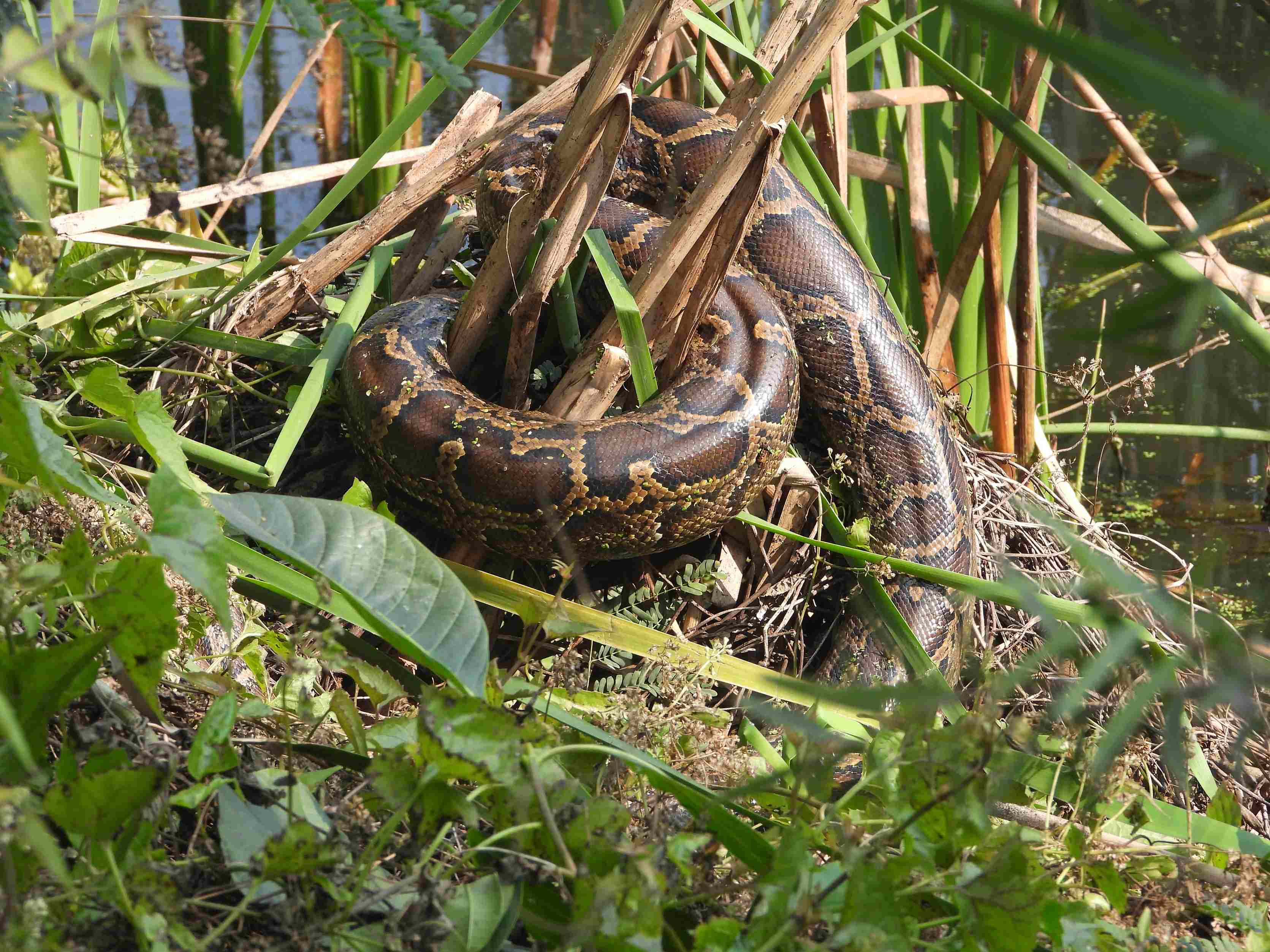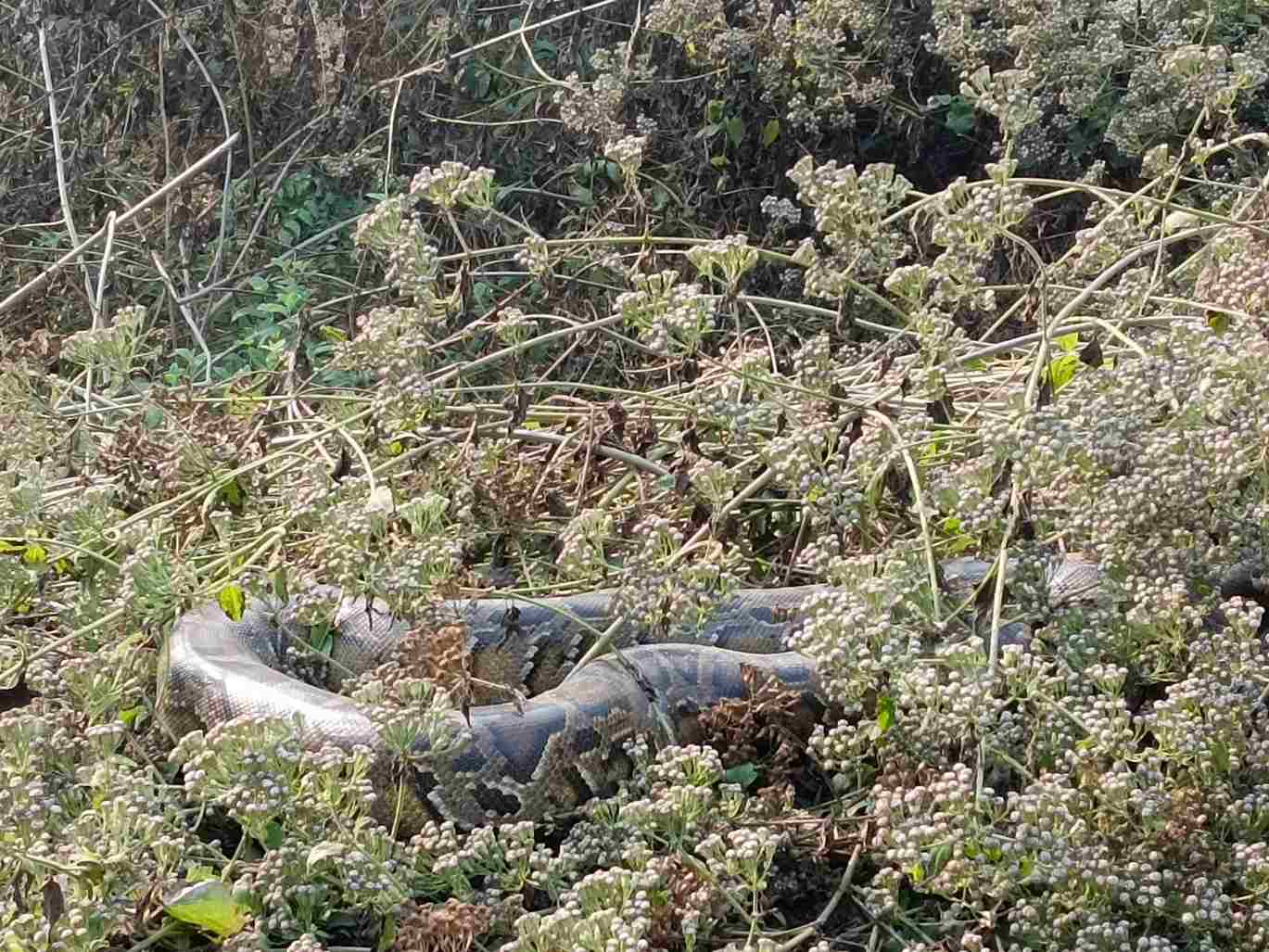Nature

What happens when scientists involved in bird census spot pythons?
They get a little distracted. And they also get tempted to share the scary-looking reptiles on social media even as works related to the annual bird counting continue.
That’s precisely what Hem Sagar Baral, a conservation biologist who led the census, has done.
This week he has shared photos of two Burmese rock pythons clicked in two different localities of the Lumbini area, near the birthplace of Gautam Buddha in western Nepal.
Every year hundreds of citizen scientists take on the job of counting birds as part of the Asian Waterbird Census (AWC). The latest census results are awaited. The pythons were spotted during the bird count in the Lumbini area.
So is it rare to spot Burmese rock pythons in Nepal?
Not at all, say experts.
Zoologist Professor Karan Bahadur Shah told NepalMinute.com: “These pythons are quite common in the area.”
It is one of the two species of pythons found in Nepal, which are non-venomous species of snake. The other python is Asiatic Rock python or also known as Indian python.
According to him, Burmese pythons can be found up to an altitude of 2,500 metres. They have been sighted in the highlands of Kaski district near Pokhara city, he said.
Although Nepal’s python population data is not available, it is listed as a vulnerable species by the International Union for Conservation of Nature (IUCN), a conservation organisation. According to IUCN, the number is declining owing to the loss of their habitats.

Professor Shah said: “These are among the protected species. Technically we have kept the type of python in ‘protected priority species’.”
Burmese pythons are excellent swimmers and can be found near swamps, rivers, or ponds, according to him.
This is the reason why pythons are quite common across the southern Tarai region compared to other regions, due to the easy availability of marshy lands, he said.
He was also quick to point out that the darker skin color in the Lumbini pythons probably stemmed from “the cold weather”.
According to him, a healthy young Burmese python can shed or change the skin four times a year, and during winter they often appear darker so as “to absorb more heat from sunlight”.
As reptiles are cold-blooded animals, these animals cannot regulate their body temperature with respect to environmental temperature. Changing the color of the skin can thus help them to absorb and reflect light to keep the body warm, said Shah.
The Burmese Python is one of the five largest species of snakes in the world, the length of which can easily reach up to five metres and can weigh 90 kilograms. The beautiful patterns on its skin also contribute to its popularity among poachers.
Also Read: Snakebite myths and realities: Watch out for snakes during monsoon






